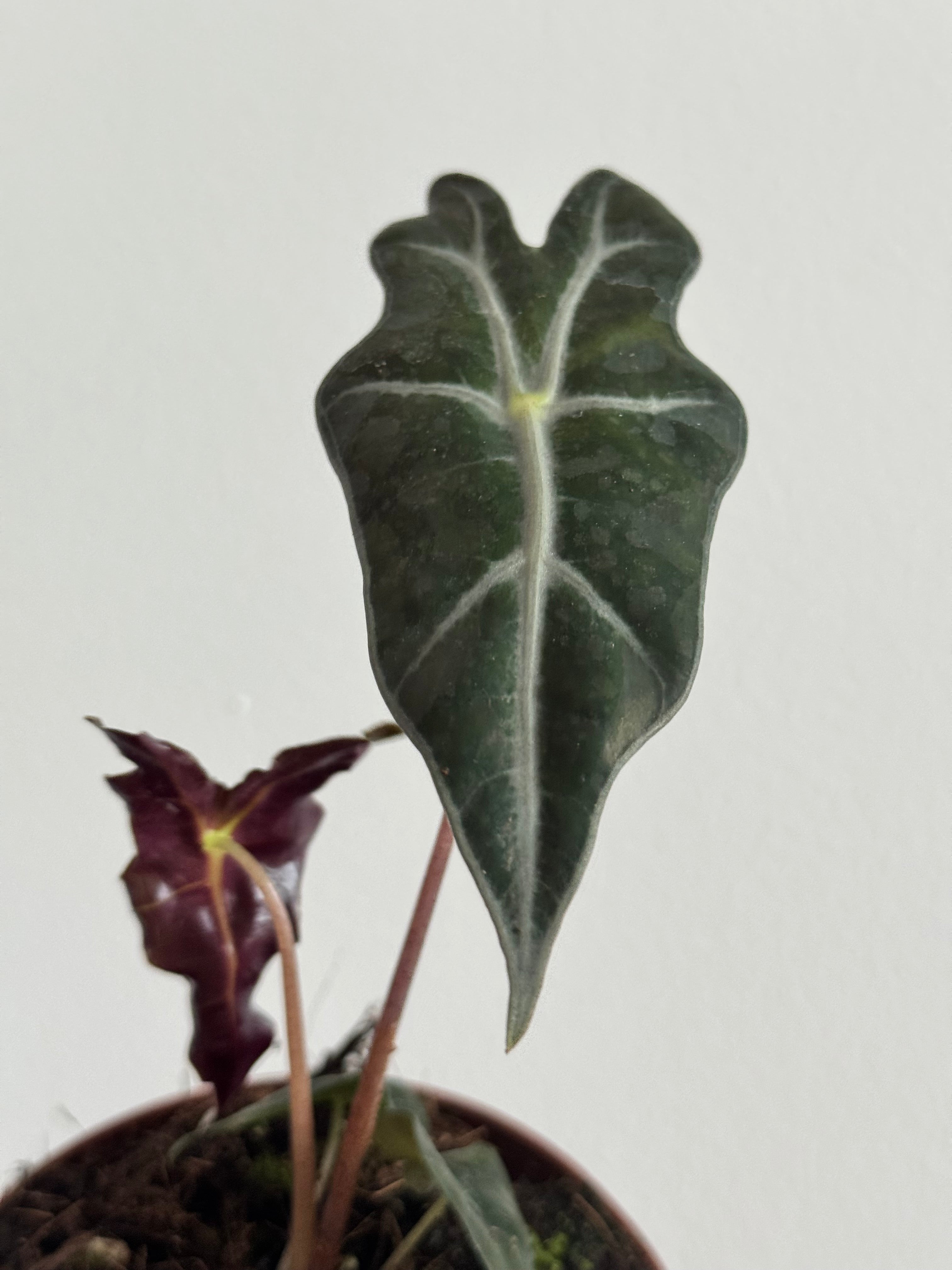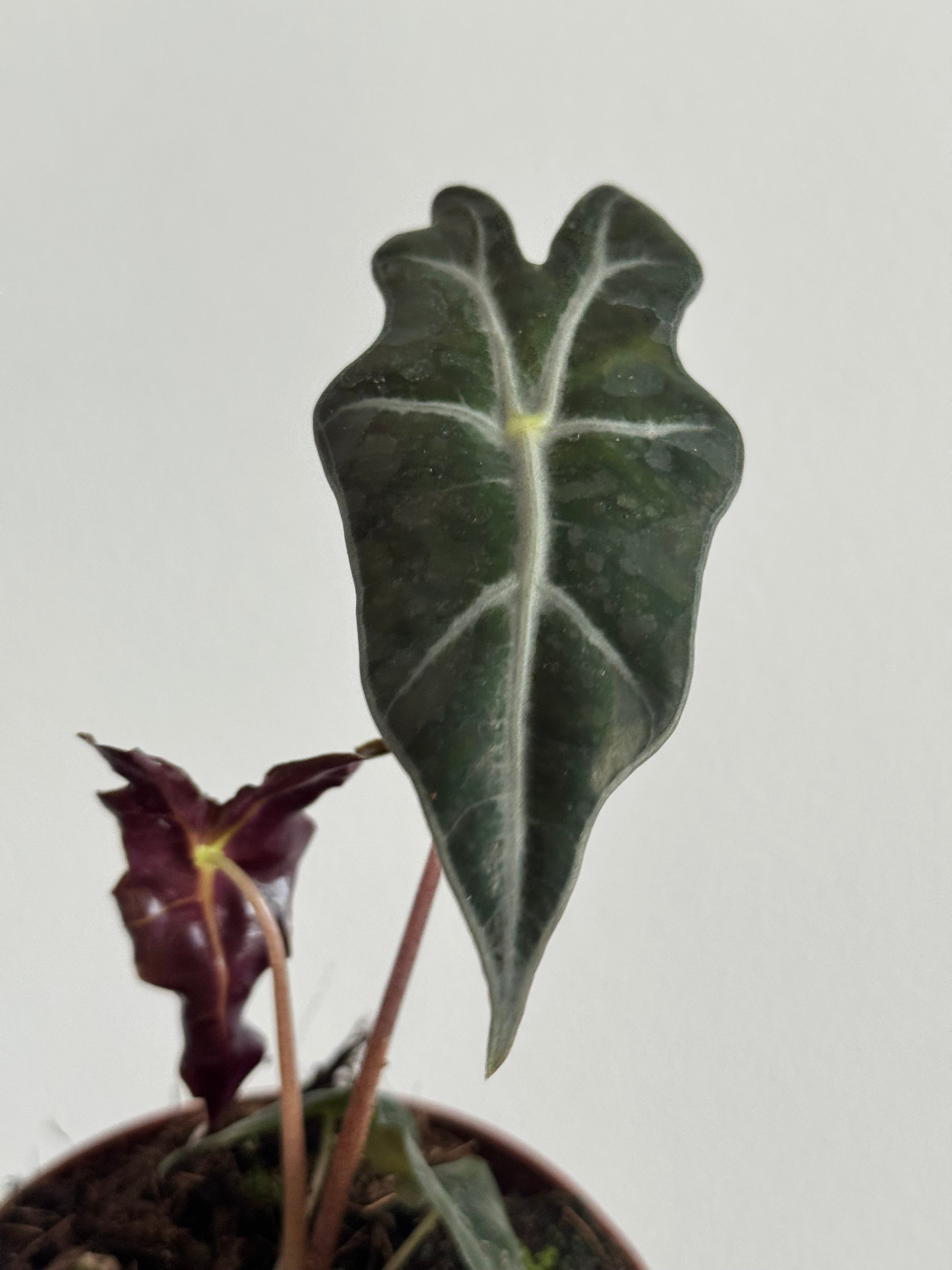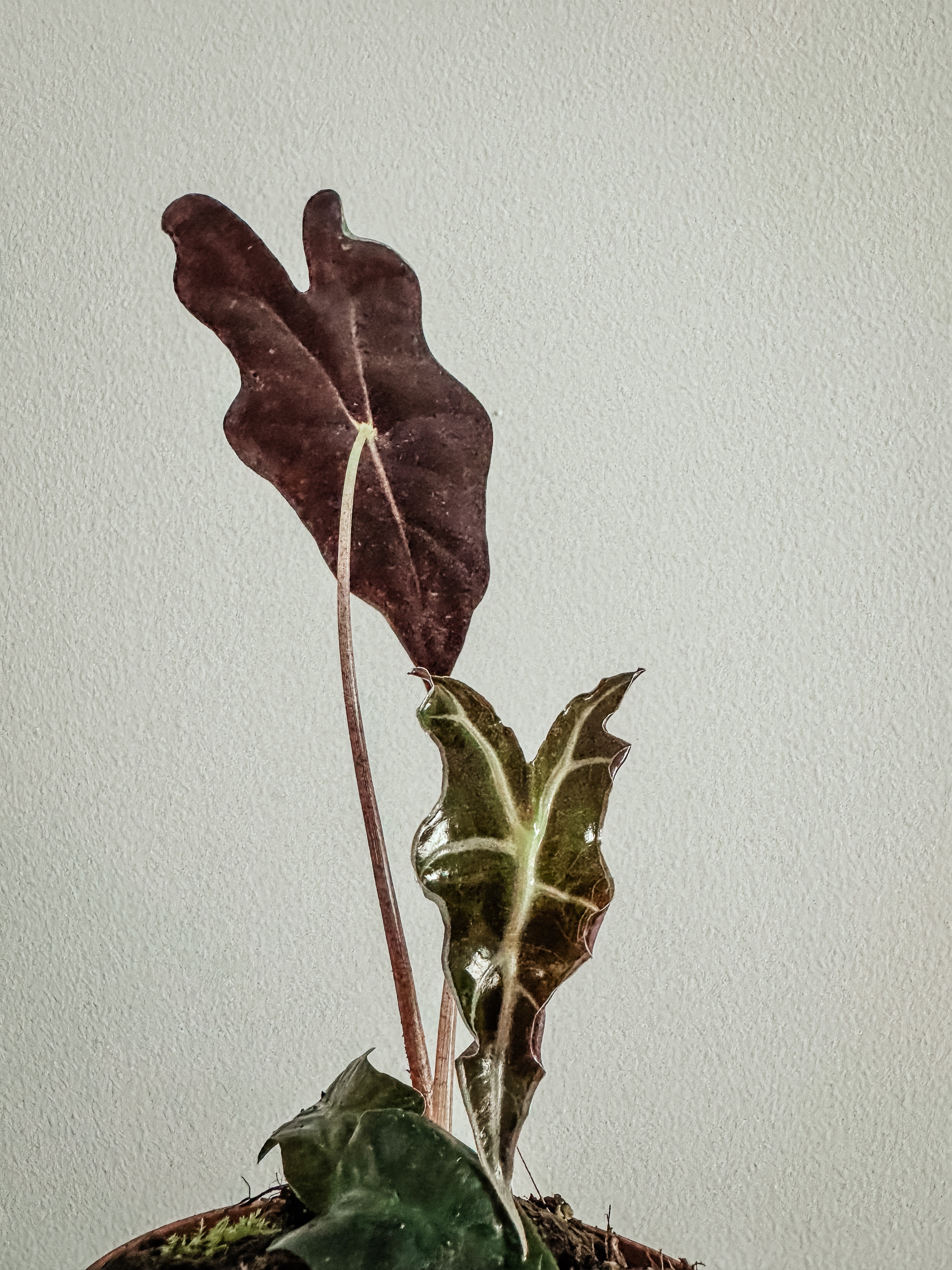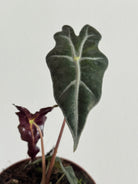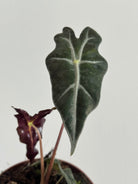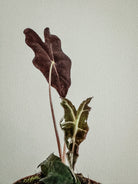Alocasia Nobilis
Couldn't load pickup availability
🌿 Alocasia nobilis Care Guide
Alocasia nobilis is a rare species native to Borneo, admired for its elegant, elongated leaves with pronounced veins and a slightly metallic or bluish-green sheen. Like most Alocasias, it thrives in warm, humid, and bright conditions with careful watering.
☀️ Light
-
Prefers bright, indirect light.
-
Avoid direct midday sunlight, which can burn or dull the foliage.
-
Morning or late afternoon sun is fine if filtered through curtains.
-
Too little light leads to slower growth and paler leaves.
💡 Tip: Near an east or bright north-facing window is ideal.
🌡️ Temperature
-
Keep between 20–30 °C (68–86 °F).
-
Stable warmth encourages lush growth and prevents dormancy.
💧 Watering
-
Water when the top 2–3 cm (1 in) of soil feels dry.
-
Water deeply until it drains out the bottom, then discard excess water.
-
Do not let the plant sit in water — Alocasia roots are prone to rot.
-
In cooler or darker months, reduce watering slightly.
💧 Consistency is key: the soil should stay evenly moist but never soggy.
🌫️ Humidity
-
Thrives in high humidity (60–85%).
-
If the air is dry, use a humidifier or place the plant on a pebble tray with water.
-
Grouping plants together can help maintain humidity levels.
-
Browning leaf edges often indicate air that’s too dry.
🌱 Soil
-
Use a loose, airy, well-draining aroid mix.
Recommended mix:-
40% coco coir or peat moss
-
30% orchid bark
-
20% perlite or pumice
-
10% charcoal or sphagnum moss
-
-
This balance allows airflow while retaining gentle moisture.
🌾 Fertilizer
-
Feed every 3–4 weeks during spring and summer.
-
Use a balanced liquid fertilizer diluted to half strength.
-
Stop or reduce fertilizing in autumn and winter when growth slows.
💡 Over-fertilizing can cause leaf burn — less is more.
🪴 Repotting
-
Repot every 1–2 years, ideally in spring or early summer.
-
Choose a pot 2–3 cm larger than the current one with good drainage holes.
-
Handle roots gently — they’re sensitive to disturbance.
🌘 Dormancy
-
In cooler seasons or low light, growth may slow or stop.
-
Some leaves may yellow and drop naturally — this is normal.
-
Reduce watering, keep warm and humid, and wait for spring growth to resume.
🐾 Toxicity
All parts of Alocasia nobilis are toxic if ingested, containing calcium oxalate crystals.
Keep out of reach of pets and children.

